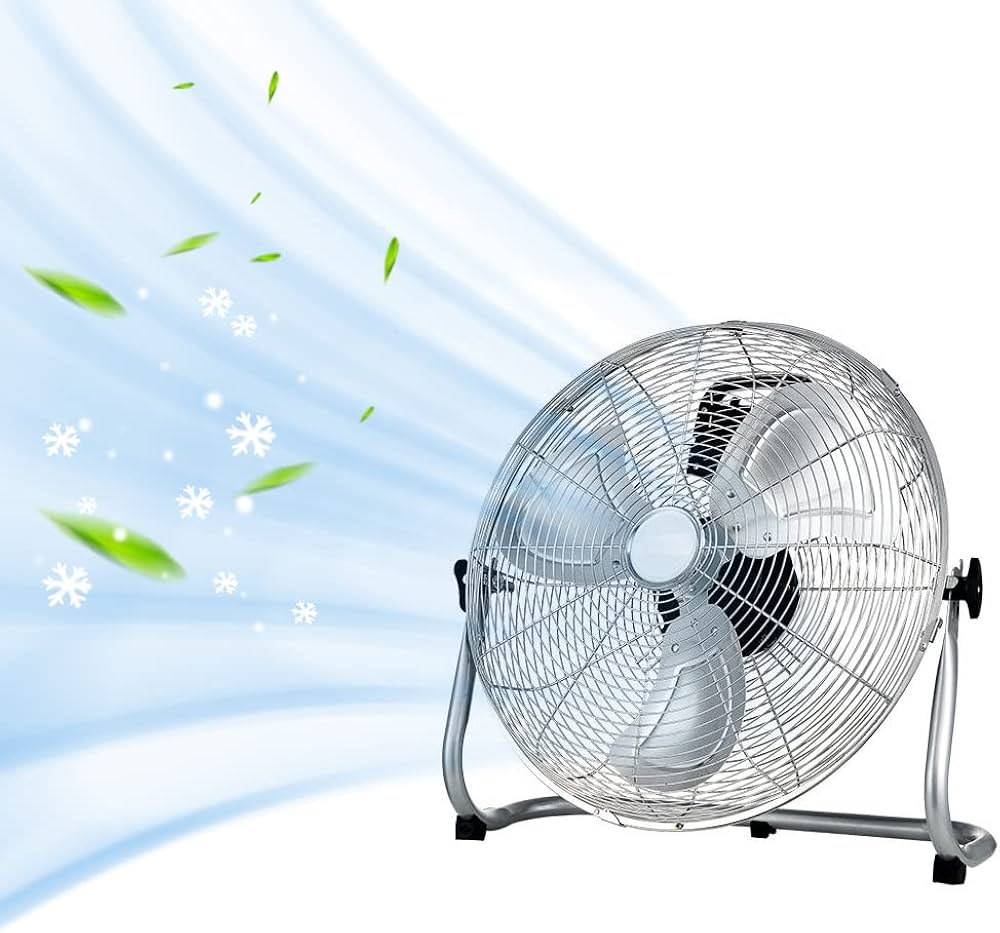The Ultimate Guide to Heavy Duty Commercial Electric Fans
In the dynamic world of commercial and industrial operations, Guide to Heavy Duty Commercial Electric Fans proper air circulation is not just a matter of comfort but also of productivity, safety, and equipment longevity. Heavy duty commercial electric fans are the unsung heroes that play a pivotal role in achieving this. Whether it’s a large factory floor, a bustling warehouse, a busy restaurant kitchen, or a crowded retail store, the right fan can make a significant difference.
Choosing the right heavy duty commercial electric fan is no trivial task. The wrong choice could lead to inefficient air movement, high energy costs, and even potential safety hazards. A well – selected fan, on the other hand, can enhance the overall environment, keep employees comfortable, and contribute to the smooth running of business operations. This comprehensive guide will walk you through everything you need to know about heavy duty commercial electric fans, from understanding the different types to making the best choice for your specific commercial space.
Understanding the Different Types of Guide to Heavy Duty Commercial Electric Fans
High Velocity Fans: What sets them apart?
Guide to Heavy Duty Commercial Electric Fans are designed to move large volumes of air at high speeds. They typically feature a powerful motor and a unique blade design. The blades are often pitched at an angle to generate a strong, focused airflow. What sets them apart is their ability to quickly circulate air over long distances. In industrial settings, high velocity fans are used to cool machinery, dry wet surfaces, or ventilate areas where fumes or dust need to be removed promptly. They are also useful in large open spaces like gymnasiums or event halls, where rapid air movement is required to keep the environment comfortable for a large number of people.
Industrial Grade Fans: Features and benefits
Industrial grade fans are built to withstand the harshest working conditions. Guide to Heavy Duty Commercial Electric Fans They are constructed with heavy – duty materials such as thick – gauge metal for the housing and durable fan blades. Guide to Heavy Duty Commercial Electric Fans These fans often come with advanced motor technology that can operate continuously for long hours without overheating. Their benefits include high reliability, which is crucial in industrial environments where downtime can be costly. They are also designed to handle extreme temperatures,Guide to Heavy Duty Commercial Electric Fans humidity levels, and exposure to dust and debris. Industrial grade fans are available in various sizes and configurations, making them suitable for a wide range of applications, from manufacturing plants to power generation facilities.
Pedestal Fans vs. Wall Mount Fans: Pros and cons of each
Guide to Heavy Duty Commercial Electric Fans Pedestal fans offer flexibility in terms of placement. They can be easily moved around a commercial space, allowing you to direct the airflow where it’s needed most. They are great for areas where temporary or variable air circulation is required, such as in a construction site office or a small workshop. However, pedestal fans can take up floor space, which may be a drawback in crowded areas.
Guide to Heavy Duty Commercial Electric Fans Wall mount fans, on the other hand, save floor space and are a more permanent installation. Guide to Heavy Duty Commercial Electric Fans They are ideal for areas where you want to ensure a consistent airflow, like along the walls of a warehouse or in a factory where machinery is placed. Wall mount fans are also less likely to be knocked over, which can be a safety advantage. But their installation may require more effort and may not be as easy to reposition as pedestal fans.
Factors to Consider When Choosing a Heavy Duty Commercial Electric Fan
Size and power requirements
The size of the fan you need depends on the size of the commercial space. A small office may require a relatively small – sized fan, while a large warehouse will need a much larger, more powerful unit. To determine the power requirements, consider the volume of the space, the number of people or equipment generating heat, and the desired air change rate. A general rule of thumb is that larger spaces with higher heat loads will need fans with higher CFM (Cubic Feet per Minute) ratings and more powerful motors.
Durability and construction materials
In a commercial setting, durability is key. Look for fans made from high – quality materials.Guide to Heavy Duty Commercial Electric Fans The housing should be made of sturdy metal, such as steel or aluminum, which can withstand impacts and resist corrosion. The fan blades should also be durable, either made of metal or high – strength plastic. A well – constructed fan will not only last longer but also require less maintenance, saving you time and money in the long run.
Noise level and energy efficiency
Noise can be a significant issue in commercial environments,Guide to Heavy Duty Commercial Electric Fans especially in offices or areas where communication is important. Choose fans that operate quietly, even at high speeds. Many modern heavy duty commercial electric fans are designed with noise – reducing features, such as aerodynamic blade designs and well – balanced motors. Energy efficiency is also crucial. An energy – efficient fan will help you save on electricity costs. Look for fans with high Energy Star ratings or those with advanced motor technologies that consume less power while delivering optimal performance.
Top Brands and Models in the Market
Review popular heavy duty commercial electric fan brands
Brands like Big Ass Fans are well – known for their innovative and high – performance commercial fans. They offer a range of large – scale fans that are designed for maximum air circulation in industrial and commercial spaces. Another popular brand is Dayton, which provides a variety of heavy duty fans with different features and price points. These fans are often praised for their durability and reliability.
Highlight key features of top models
Guide to Heavy Duty Commercial Electric Fans The Big Ass Fans Haiku L is a top – of – the – line model. It features a sleek design and advanced technology. Guide to Heavy Duty Commercial Electric Fans The fan is extremely quiet, yet it can move a large volume of air efficiently. It also comes with energy – saving features, making it an ideal choice for environmentally conscious businesses. The Dayton 4E745 is another notable model. It has a powerful motor and a rugged construction. The fan is designed to operate in tough industrial environments and can withstand high temperatures and dust.
Installation and Maintenance Tips
Proper installation guidelines for maximum efficiency
When installing a heavy duty commercial electric fan, follow the manufacturer’s instructions carefully. For wall mount fans, ensure that the mounting brackets are securely attached to the wall. The fan should be installed at an appropriate height to ensure optimal air circulation. For pedestal fans, make sure the base is stable and level. In some cases, additional support may be required, especially for larger fans.
Maintenance tips to prolong the lifespan of your fan
Regular maintenance is essential to keep your fan in good working condition. Guide to Heavy Duty Commercial Electric Fans Clean the fan blades and housing regularly to remove dust and debris. Check the motor for any signs of overheating or unusual noises. Lubricate moving parts as recommended by the manufacturer. If the fan has a filter, clean or replace it regularly. By following these maintenance tips, you can extend the lifespan of your fan and ensure its continued optimal performance.
Běžné problémy a jejich řešení
Guide to Heavy Duty Commercial Electric Fans Address common issues that may arise with heavy duty commercial electric fans
One common problem is excessive noise. This can be caused by unbalanced fan blades, a worn – out motor, or loose parts. Another issue is reduced airflow, which may be due to dirty blades, a clogged filter, or a malfunctioning motor. Sometimes, the fan may not start at all, which could be a problem with the power supply, the switch, or the motor.
Provide troubleshooting solutions for each problem
If the fan is making excessive noise, first check the fan blades for any signs of damage or dirt. If the blades are dirty, clean them. If they are unbalanced, you may need to replace them. For a noisy motor, check the lubrication and if necessary, replace the motor bearings. If the airflow is reduced, clean the blades and the filter. If the problem persists, the motor may need to be serviced. If the fan won’t start, check the power cord and the switch. If they are working fine, the motor may be faulty and require replacement.
Závěr
Guide to Heavy Duty Commercial Electric Fans In conclusion, choosing the right heavy duty commercial electric fan is a multi – faceted process. Understanding the different types of fans, considering factors such as size, power, durability, noise level, and energy efficiency, and being aware of top brands and models are all crucial steps. Proper installation and regular maintenance are also essential to ensure the fan’s optimal performance and longevity.
When faced with common problems, knowing how to troubleshoot can save you time and money. By carefully evaluating your commercial space’s needs and following the guidelines provided in this article, you can make an informed decision and select the best heavy duty commercial electric fan for your business. Remember, Guide to Heavy Duty Commercial Electric Fans a well – chosen fan is an investment that can contribute to a more comfortable, productive, and efficient commercial environment.

